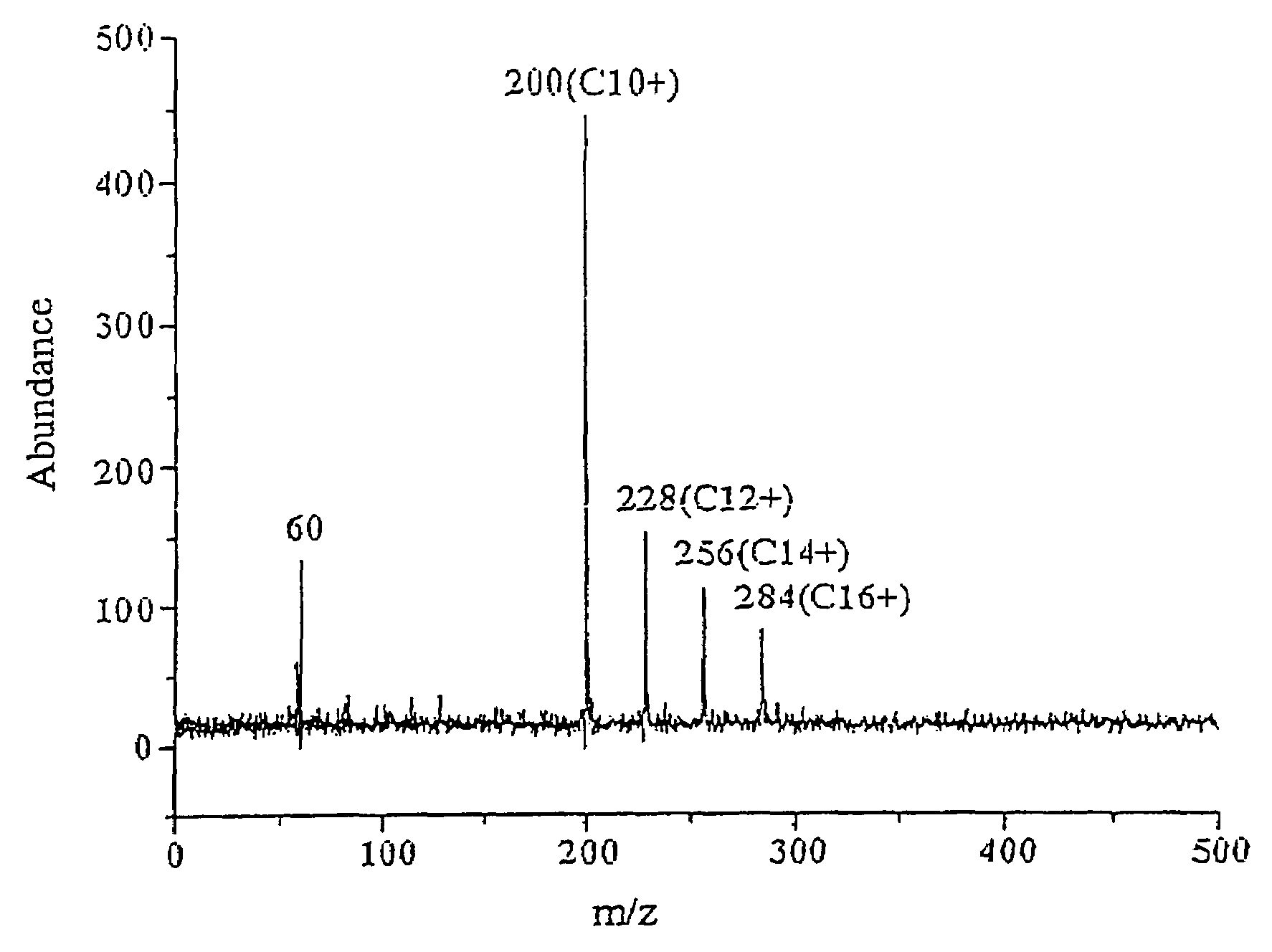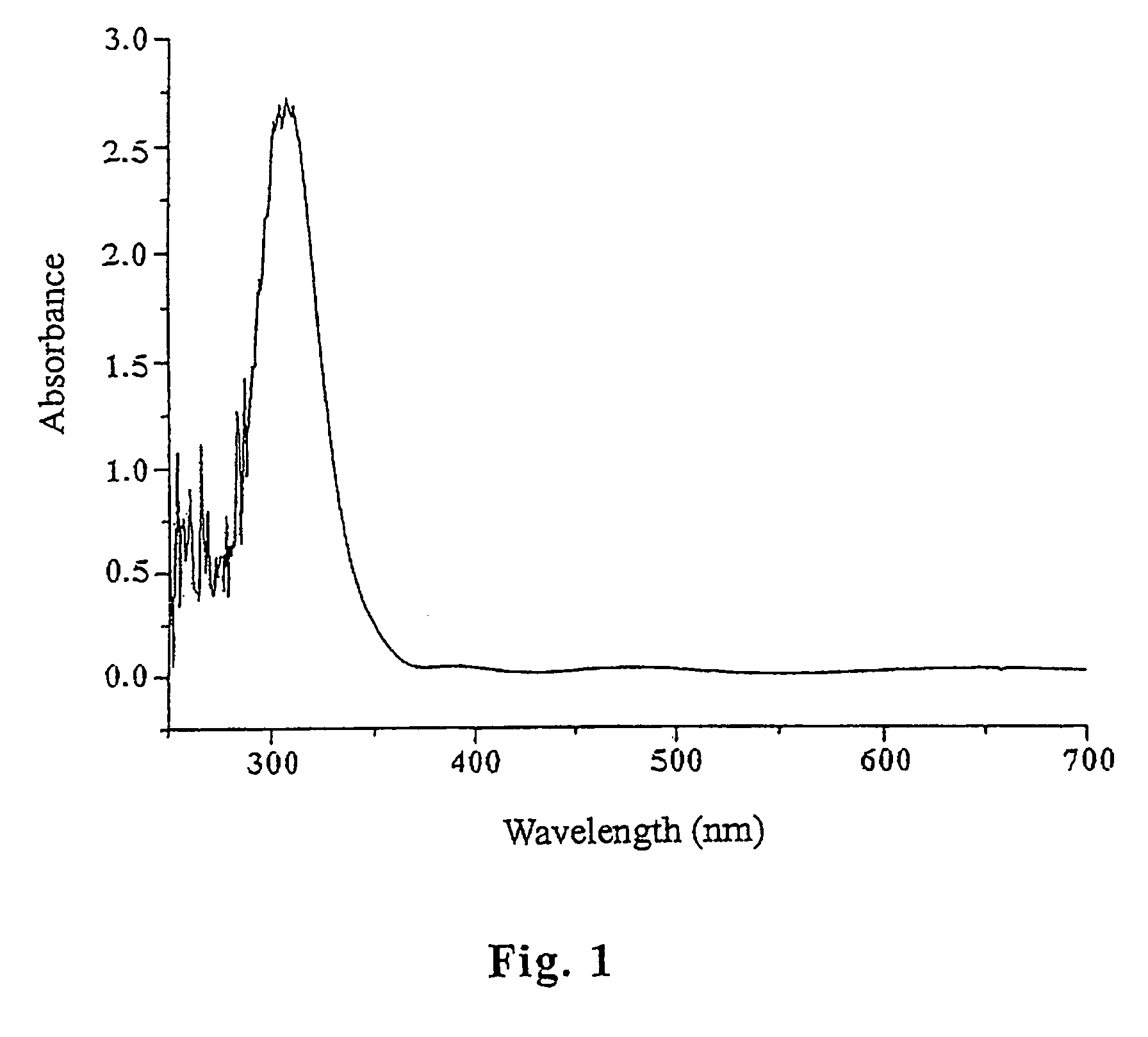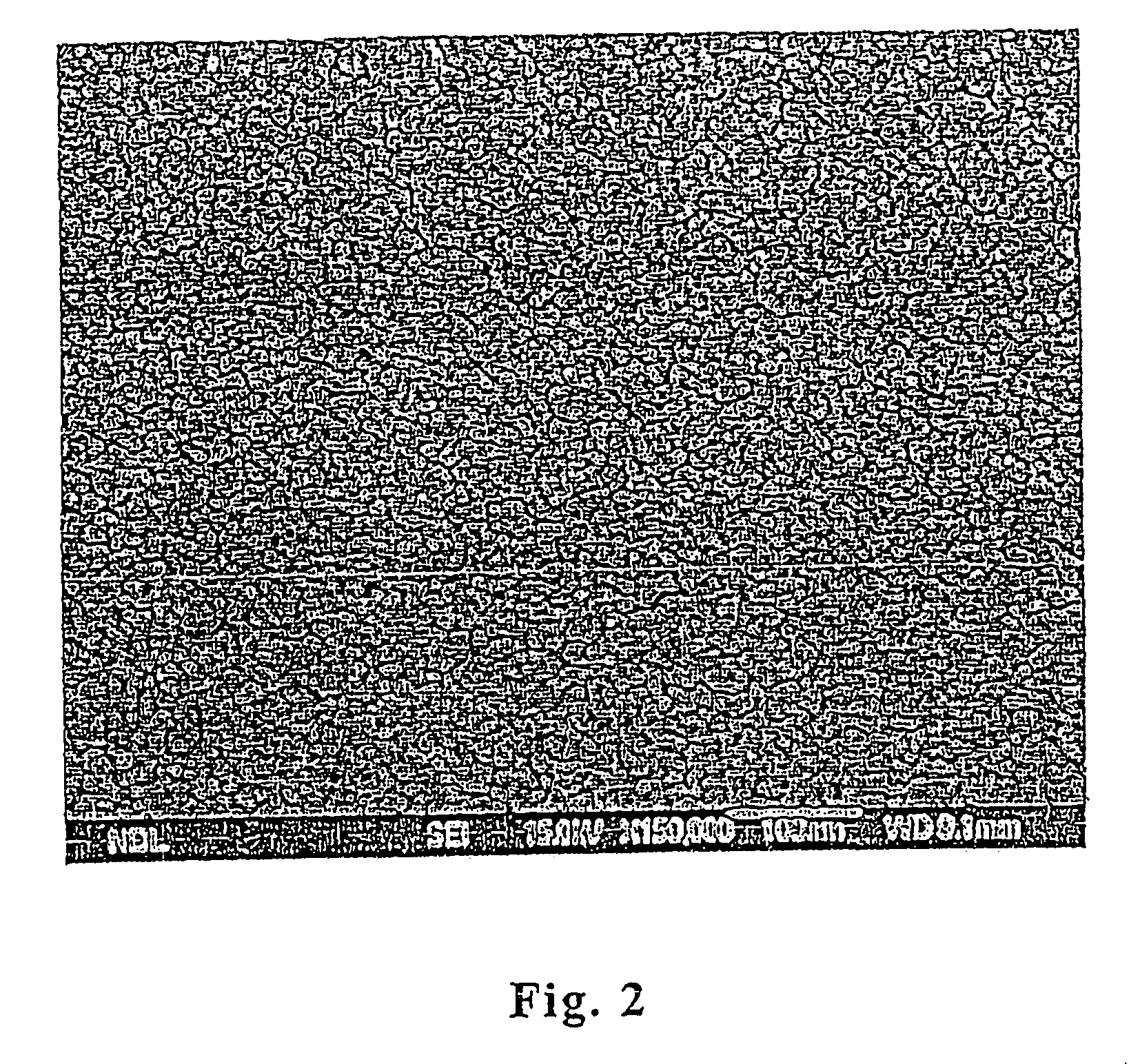Metal oxide-assisted laser desorption/ionization mass spectrometry
a technology of laser desorption and mass spectrometry, which is applied in the field of new laser desorption mass spectrometry (ld ms), can solve the problems of ineffective substrates, easy oxidation of porous silicon substrates, and problems in storage and practical use, and achieves the effect of low matrix background and ease of sample preparation
- Summary
- Abstract
- Description
- Claims
- Application Information
AI Technical Summary
Benefits of technology
Problems solved by technology
Method used
Image
Examples
example 1
Preparation of Titania Thin Films.
[0019]Titania sol was prepared by stirring titanium (IV) n-butoxide (3.4 mL) and ethanol (1.6 mL) for 30 min at room temperature (ca. 27° C.). A solution of ethanol (1.6 mL), water (0.18 mL), and 60% nitric acid (75 L) was then added slowly into the titanium (IV) n-butoxide / ethanol solution, which was stirred for an additional 10 min in an ice bath. Polyethylene glycol (MWave=600, 15 g) was added into the mixture and stirred for ca. 30 min. An aluminum sheet (2 cm×2 cm×0.2 mm) was used as the support for the titania sol coating. The aluminum support was pretreated by soaking it in acetone and then in methanol for 5 min in a sonicator to remove impurities. The titania sol solution was spin-coated onto the surface of the aluminum support (or a glass slide) using a spin coater. The titania sol solution was applied slowly to the aluminum sheet during the spin coating process. The modified aluminum sheet, coated with a thin film of titania, was aged for ...
embodiment 1
[0023]Small organics such as cationic surfactants were used as the sample to demonstrate the matrix background in the low mass region. FIG. 3 displays the MOALDI mass spectrum of a mixture containing four cationic surfactants with different carbon chain length, i.e. hexadecyltrimethylammonium bromide (C16+, 68 fmol), tetradecyltrimethylammonium bromide (C14+, 74 fmol), dodecyltrimethylammonium bromide (C12+, 80 fmol) and decyltrimethylammonium bromide (C10+, 90 fmol) using titania film as the assisting material. The peaks at mlz 200, 228, 256, and 284 correspond to the C10+, C12+, C14+, and C16+ ions, respectively, each without its bromide counterion. In addition to these precharged ions, a peak corresponding to the NH(CH3)3+ ion, arising from fragmentation of the cationic surfactants, appears in the lower-mass region at mlz 60. No background ions arising from the titania matrix appear in this mass spectrum.
embodiment 2
[0024]Cationic surfactants are pre-charged ions, and no proton source is required. However, analytes such as peptides require proton sources for protonation. Citric buffer solution (C1) was prepared based on the preparation procedures as that displayed in Example 1. Sample D2 solution was prepared by mixing equal volume of bradykinin (9.4×106 M) mixed with citric buffer C1.
[0025]A titania film coating on an aluminum sheet as that prepared Example 1 was adhered onto a sample target using doublesided carbon tape. Sample D2 (0.2 μL) was applied on the surface of the titania film. After the solution evaporated, the sample target was introduced into the mass spectrometer for MOALDI MS analysis. FIG. 4 displays the MOALDI mass spectrum of sample D2. The protonated bradykinin pseudomolecular ions dominate the mass spectrum. The peaks at m / z 39, 70, 231, and 269 correspond to K+ and Al2O+ ions and to potassium adducts of citric acid ([M+K+]+ and [M−H++2K+]+), respectively. The Al2O+ signal ...
PUM
 Login to View More
Login to View More Abstract
Description
Claims
Application Information
 Login to View More
Login to View More - R&D
- Intellectual Property
- Life Sciences
- Materials
- Tech Scout
- Unparalleled Data Quality
- Higher Quality Content
- 60% Fewer Hallucinations
Browse by: Latest US Patents, China's latest patents, Technical Efficacy Thesaurus, Application Domain, Technology Topic, Popular Technical Reports.
© 2025 PatSnap. All rights reserved.Legal|Privacy policy|Modern Slavery Act Transparency Statement|Sitemap|About US| Contact US: help@patsnap.com



